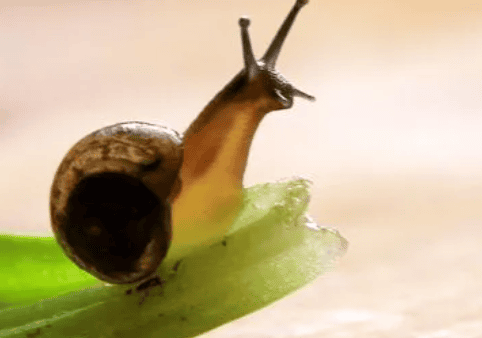A humble marine snail, the Sachs snail, has successfully evolved live birth, or viviparous, within the past 100,000 years. Live birth allows the snail to occupy and adapt to different habitats. This led to the evolution of many "ecotypes" of varying sizes, shapes and behaviors.

Laying eggs appeared long before animals evolved on land. This is the reproductive mode of oviparous animals. Another contrasting mode of reproduction that emerged as animals became more complex was viviparity.
Throughout evolution, the animal kingdom, including insects, fish, reptiles and mammals, has experienced many independent life transitions. Scientists already understand much of this. However, humans have not yet solved the genetic mystery of this important evolutionary step from egg laying to viviparity.
In the new issue of "Science" magazine, an international research team composed of researchers from the Austrian Institute of Science and Technology, the University of Sheffield in the United Kingdom, and the University of Gothenburg in Sweden used an inconspicuous marine snail-Saxophone Binluo, revealed this secret.
This marine snail has successfully evolved live birth, that is, viviparous birth, within the past 100,000 years. From the perspective of a long evolutionary history, 100,000 years is just the blink of an eye, but it is a unique opportunity to reveal the mysteries of genetics.
01
More than a hundred names for one species
Marine snails are the most misidentified creatures in the world.
The British "Guardian" previously reported that over the centuries, scientists have continued to describe it as a new species or subspecies more than 100 times.
Part of the confusion stems from the fact that the species undergoes many shell variations and habitat changes. But most importantly, the Saxophone snail has a unique reproductive pattern. It has evolved to give birth alive, while the closely related marine snails that share its habitat are still laying eggs.
Nearly all mammals give birth alive, a function that has evolved with them for about 140 million years, researchers said. However, in this study, they found that live birth in marine snails not only evolved completely independently, but also occurred relatively recently.
The team also made another important discovery: the shift to live-birth reproduction was caused by about 50 genetic changes scattered across the snail's genome.

02
Abandon the original model step by step
Researchers used the whole genome sequence to infer the phylogeny of Sachs snails and other "close relatives" that are still laying eggs. The tree is the evolutionary “family tree”.
In an eye-opening twist, live birth is the only thing that distinguishes the snail from its close relatives. But the snails don't seem to have formed a single evolutionary group. This mismatch between reproductive strategy and ancestry ultimately allowed the team to separate the genetic basis of live birth from other genetic changes throughout the snail's genome.
The researchers identified 50 genomic regions that appear to collectively determine whether the owner of the gene will lay eggs or give birth directly to live birth. Although the role of each region is not yet known exactly, by comparing gene expression patterns in oviparous and viviparous animals, the researchers have linked many of these regions to reproductive differences.
In the end, they discovered that such a major change as live birth was by no means a dramatic sudden change, but a step-by-step accumulation of evolution through many mutations over 100,000 years.
03
An evolutionary secret that remains unexplored
Switching to live birth allows tiny marine snails to spread to new habitats. In these places, ordinary oviparous animals cannot survive and reproduce. It is true that both methods of reproduction can accomplish the task of producing offspring, but their benefits and costs are completely different. Why did these snails evolve live births again? What exactly are the benefits? This remains a mystery.
The researchers speculate that this change may also be due to natural selection to protect the eggs-the eggs can hatch inside the mother's body. The eggs of oviparous animals are more susceptible to desiccation, physical damage and predators. But the strange thing is that although this solves certain problems, it will definitely come at other costs. Because live birth means "additional investment" in offspring, it means that the mother "walks a tightrope" between protecting herself and protecting her offspring, which places strict demands on the physiological and immune systems of marine snails. Many of the genomic regions discovered in this study are likely to be involved in meeting these challenges.
From an evolutionary perspective, people still cannot decipher the mystery.
So while this discovery provides a wealth of clues to understanding the transition from oviparity to viviparity, a number of questions remain to be answered. For scientists, they are just beginning to scratch the surface of this knowledge. Next, the researchers hope to map the function of each mutation, revealing how each genetic change shapes various "rules of the game" in reproduction.

 扫一扫微信交流
扫一扫微信交流
发布评论